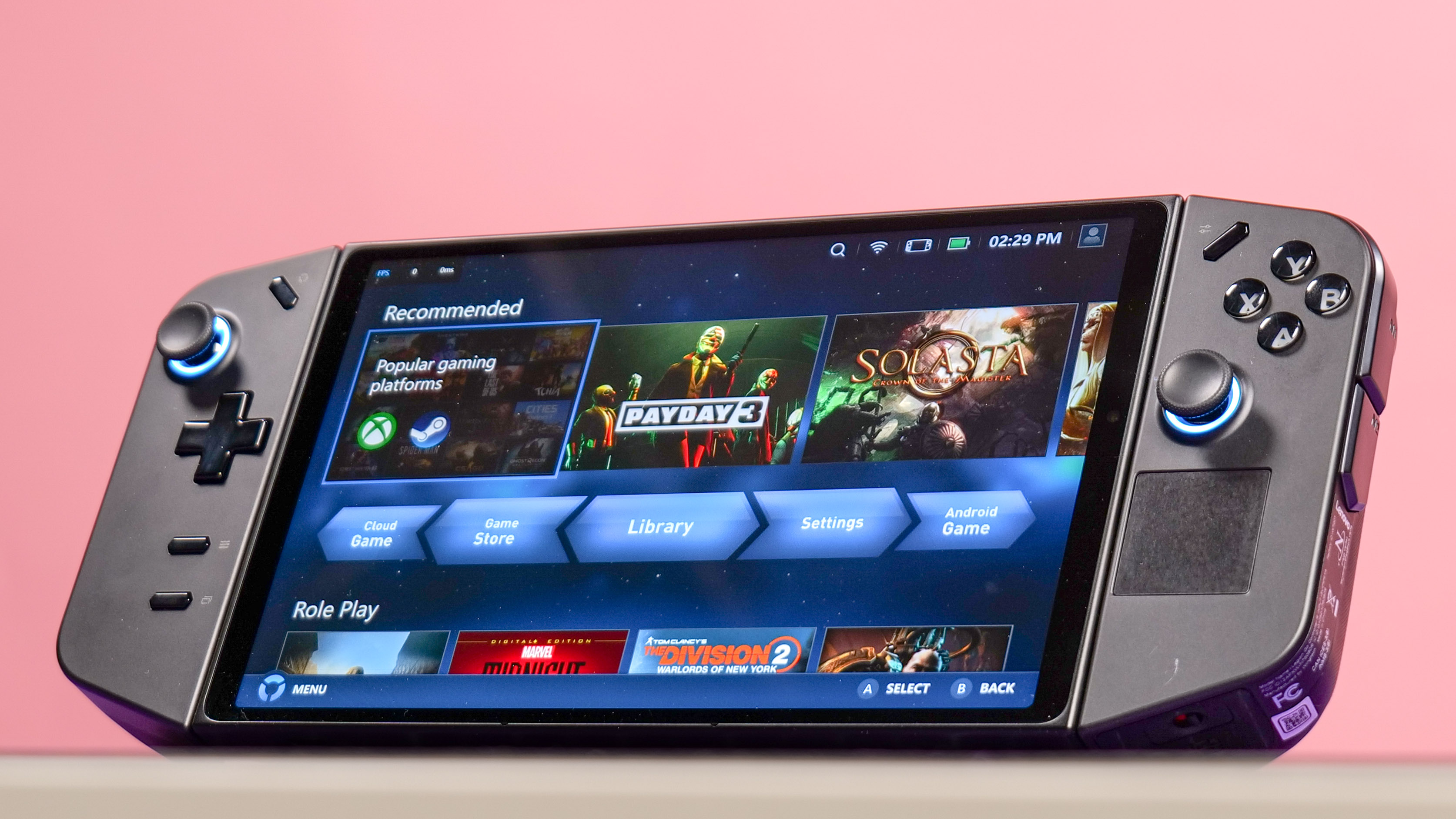
The Lenovo Legion Go is simultaneously awesome and frustrating. I went hands-on with the recently released Windows 11 handheld a few months ago and thought it had the potential to beat the Steam Deck and Asus ROG Ally. However, I also wrote about how Lenovo’s machine needed one specific thing to succeed. Now that I’ve had more time with the Legion Go, I have a better sense of what the machine can do — and what it can’t.
I’m currently testing the Legion Go for my review. That’s coming soon, but I wanted to share some initial thoughts on the new gaming handheld. Right now, it doesn’t seem like the Legion Go is a better option than the mighty Steam Deck, though there’s still plenty to like about it. For some, the Legion Go could very well be the best gaming handheld ever.
I’ll have my full Lenovo Legion Go review for you soon. For now, here’s what I like (and hate) about the handheld so far.
Lenovo Legion Go: What I like
Large display
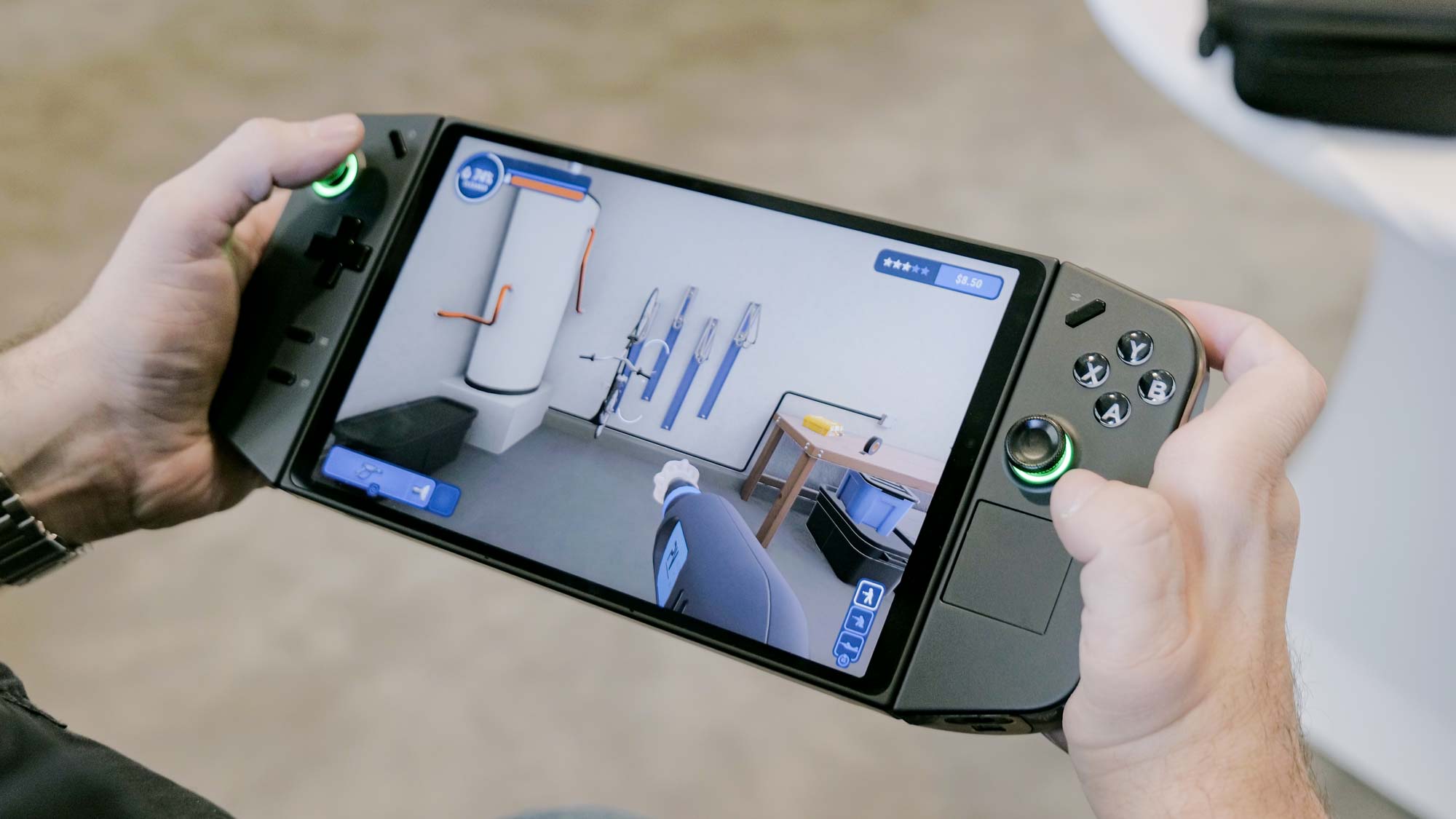
One of the big reasons (pun intended) the Legion Go has garnered so much attention is because of its large 8.8-inch display. As I said in my initial hands-on preview, it looks enormous compared to the 7-inch displays seen on the Steam Deck, Asus ROG Ally and AyaNeo 2S. The screen can achieve a 2,560 x 1,600 resolution and a 144Hz refresh rate. The aforementioned competitors can’t match that.
So far I’ve tested Cyberpunk 2077, Doom Eternal and Marvel’s Spider-Man on the Legion Go, and love how much more detail I can see on the 8.8-inch display. I haven’t played anything that takes advantage of the 144Hz refresh rate (yet), but at 60Hz everything runs buttery smooth.
Lenovo claims the display hits 97% of the DCI-P3 color gamut and can achieve up to 500 nits of brightness. We’re still in the middle of testing this device in our lab, but to my eyes, the screen is very bright and colorful. I expect good results from our test results.
Built-in kickstand
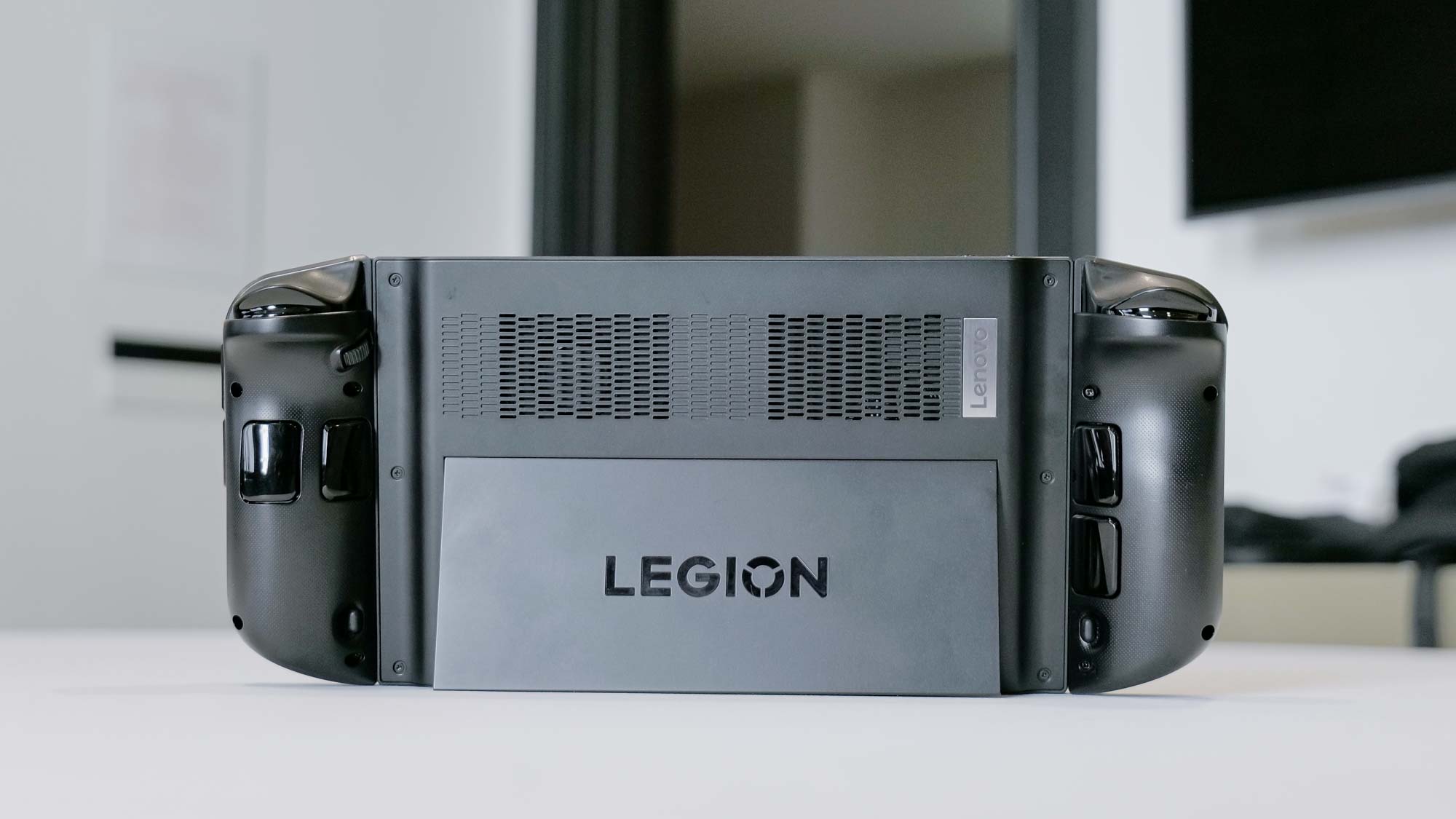
Unlike the Switch, which has a thin and flimsy kickstand on the back, the Legion Go has a wide kickstand that covers its entire backside. This not only ensures your machine won’t topple over, but it also opens up an alternative way to play the device.
While the Legion Go only weighs 1.88 pounds, it can feel heavy after extended use. Because of that, I like flipping the kickstand open, detaching the controlelrs and playing the handheld while it’s on a desk. You can do this with the Switch as well, but the thin kickstand makes it a cumbersome exercise. Not so with the Legion Go. The built-in kickstand is a true winner.
Easy access to popular game launchers
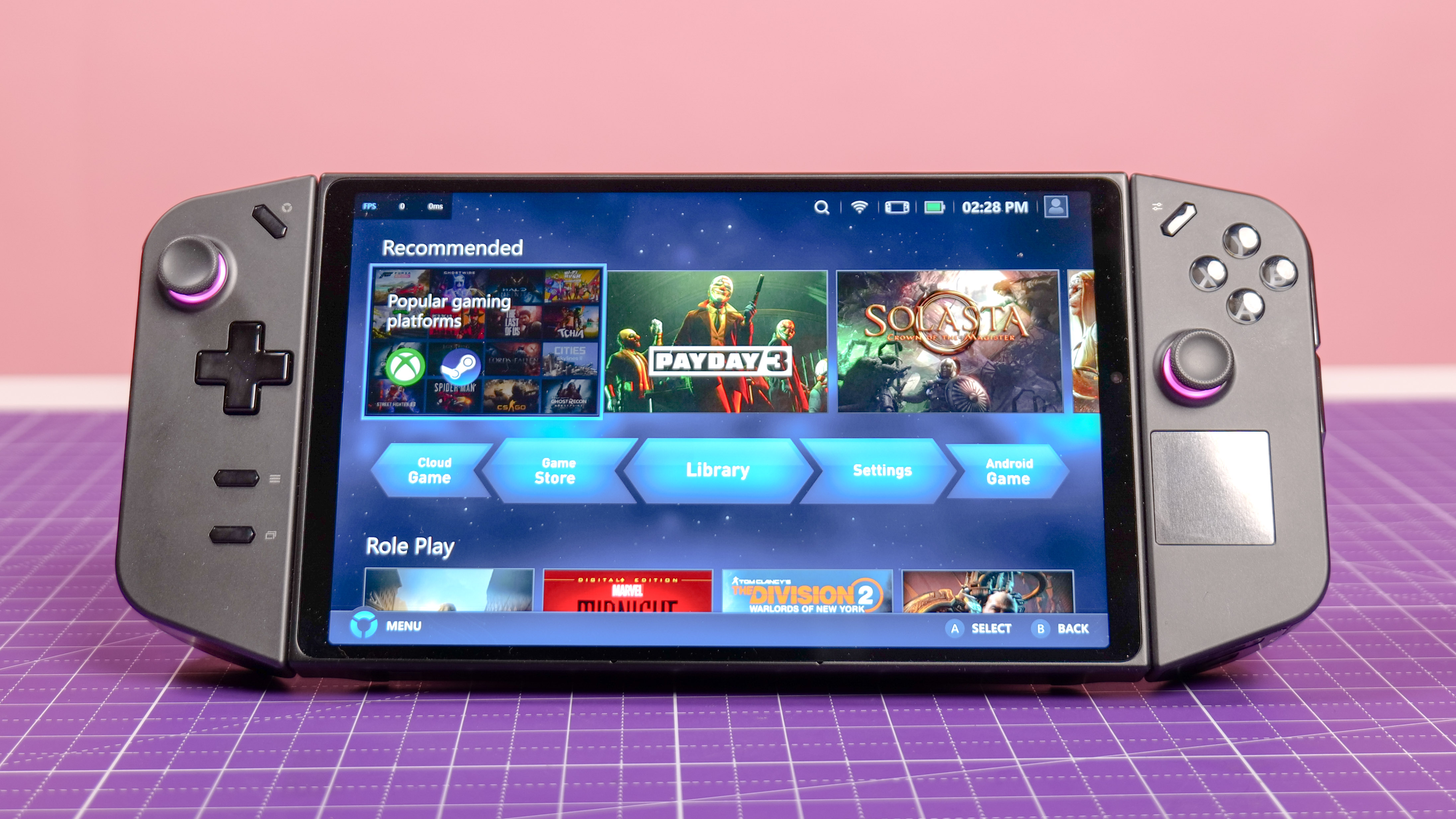
Legion Space is the Legion Go’s answer to the SteamOS UI (User Interface). I’ll cover Legion Space in greater depth in my full review, but I wanted to go over something I like about the UI: easy access to the most popular game launchers.
Like the ROG Ally and AyaNeo 2S, you’re able to link to game launchers like Steam, GoG, Xbox, Epic Games and more. All you need to do is click on “Popular gaming platforms” (which is the first tab available) and then select your platform from the list provided. You’ll need to use the virtual on-screen keyboard to type your login information via touchscreen controls. Aside from that, connecting to game launchers is a relatively easy process.
Lenovo Legion Go: What I dislike
It’s a Windows 11 machine
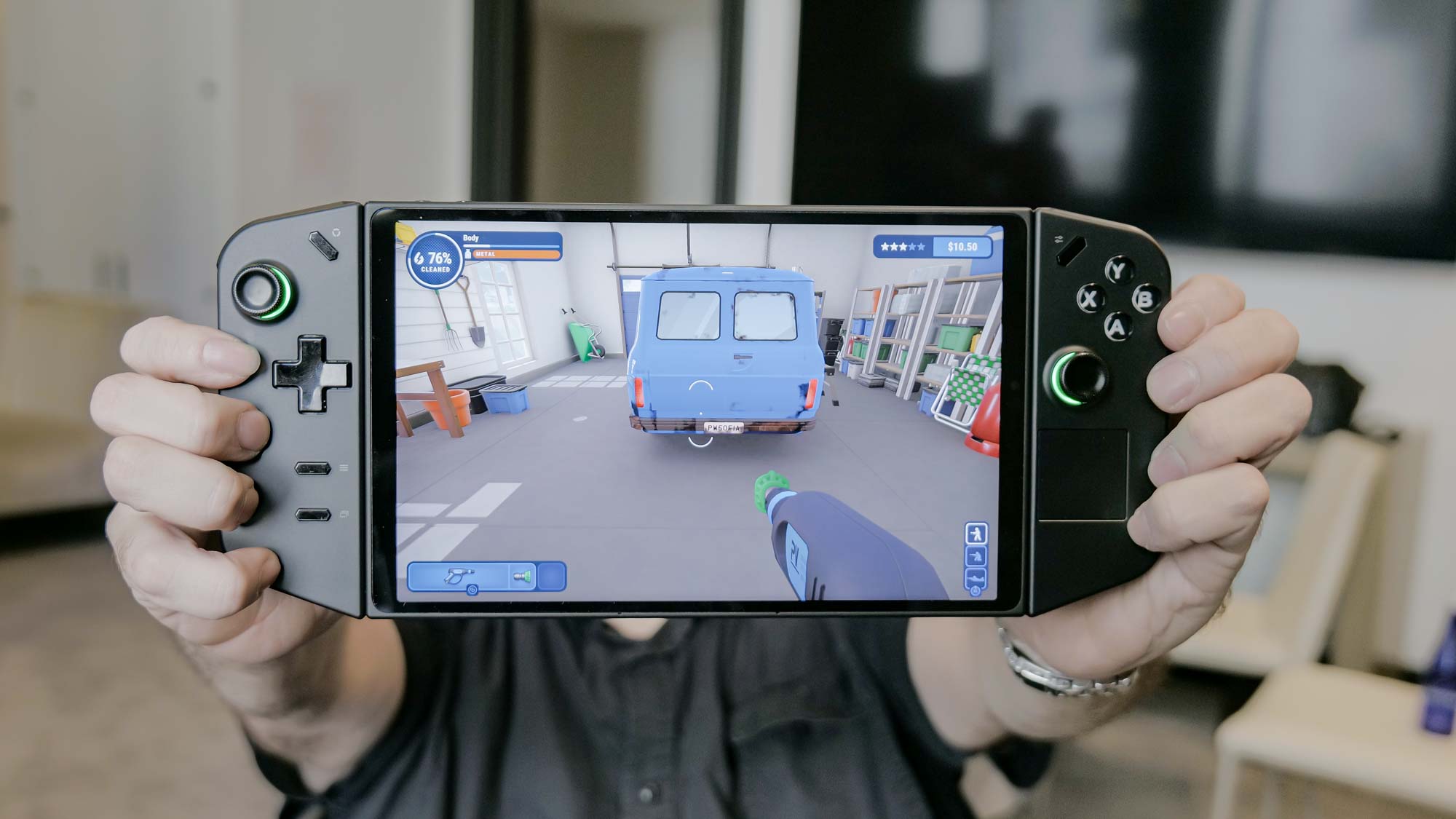
Like the ROG Ally and AyaNeo 2S, the Legion Go runs on Windows 11. And like those two handhelds, Windows 11 is both the Legion Go’s strength and weakness.
Because the Legion Go is effectively a small Windows 11 PC, it’s able to run most Windows-compatible applications. Heck, you can even connect the Legion Go to the best monitors, the best wireless keyboards and the best mice to use the handheld as an honest-to-goodness PC (provided you have a USB hub with the appropriate ports). The machine’s versatility (which is arguably greater than the Steam Deck which runs on SteamOS), is no doubt a major selling point for those who like installing their own apps and games.
But since this is a Windows 11 machine first and foremost, it can sometimes feel like a clumsy, hard-to-navigate handheld PC instead of an intuitive, streamlined gaming handheld. Like the ROG Ally, controller support is limited outside of Legion Space — meaning you’ll need to use touch controls to utilize apps, surf the web, install programs and more. Windows 11 is built for touchscreens so navigating via touch controls is relatively seamless. But as I said, it can make this gaming machine feel like a clunky Windows PC instead.
Good (but not great) performance
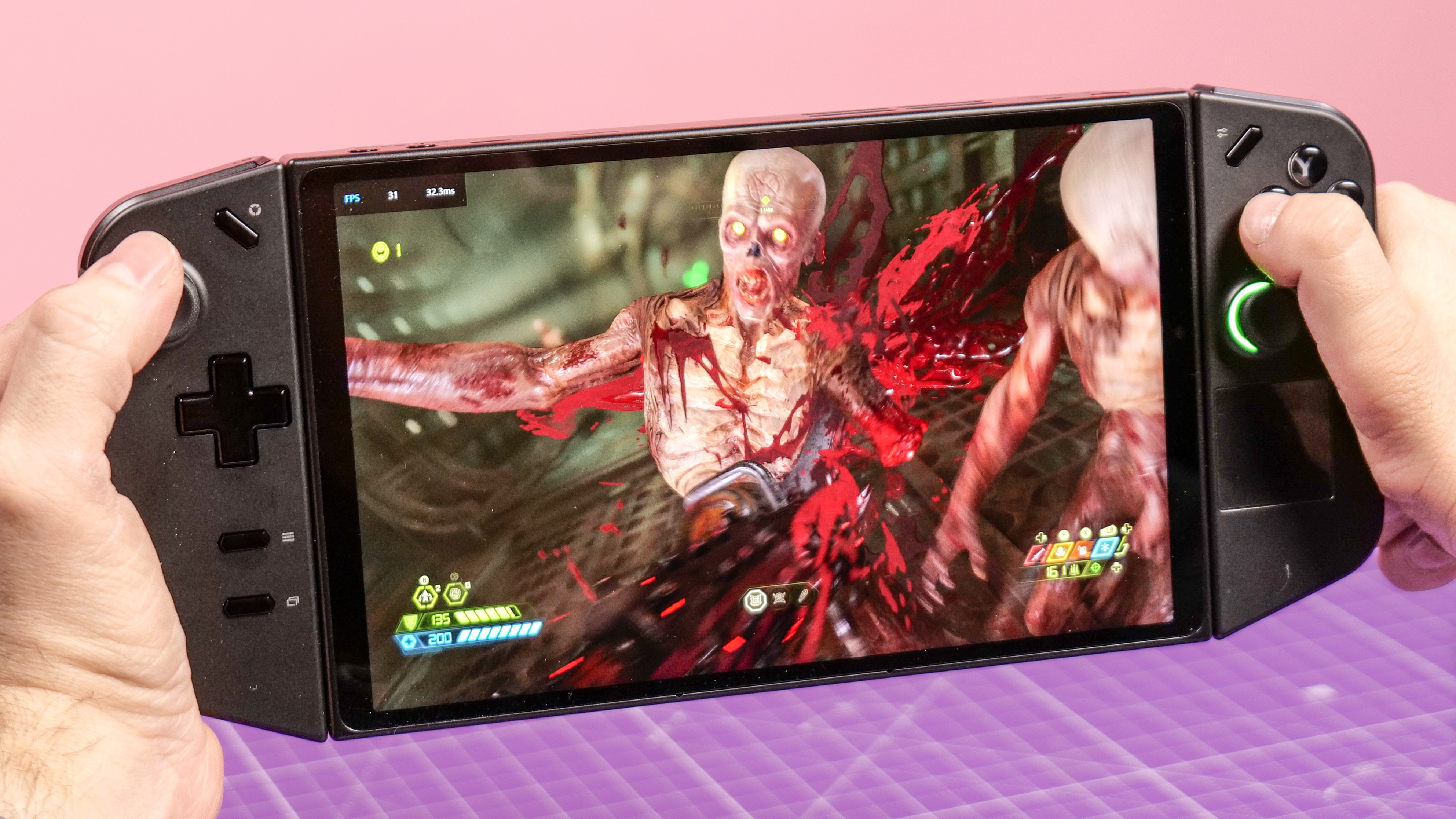
The Legion Go has the same AMD Ryzen Z1 Extreme chip powering the Asus ROG Ally. On Geekbench 5, which tests overall CPU performance, Asus’ handheld crushed the Steam Deck both in single-core and multi-core performance. The same will likely be true when we run benchmarks on the Legion Go. However, impressive benchmark numbers don’t always translate to real-world performance.
I’ll save the details for my full review, but in short, don’t expect the Legion Go to play the best PC games at 2,560 x 1,600 resolution at high framerates. Even with the device’s performance mode enabled, the extremely well-optimized Doom Eternal ran at a pitiful 15 to 20 frames per second. I had to lower the resolution to 1,920 x 1200 and set the device's TDP to 30W (via settings) to get the game running at an acceptable 30 to 45 fps. Lowering the resolution to 1,280 x 800p bumped the fps to the mid-70s, but at that resolution, the game looked atrocious on the 8.8-inch display.
Objectively, being able to play graphically demanding games at 1200p at 45 frames a second on a handheld is extremely impressive. That’s far far better than what the Nintendo Switch can do. However, it stinks that you have to mess around with both in-console and in-game settings to get decent resolution and frame rates. I know that’s a selling point for PC players, but average folks who just want to play a game might feel frustrated over the lackluster out-of-the-box performance.
Detachable controllers
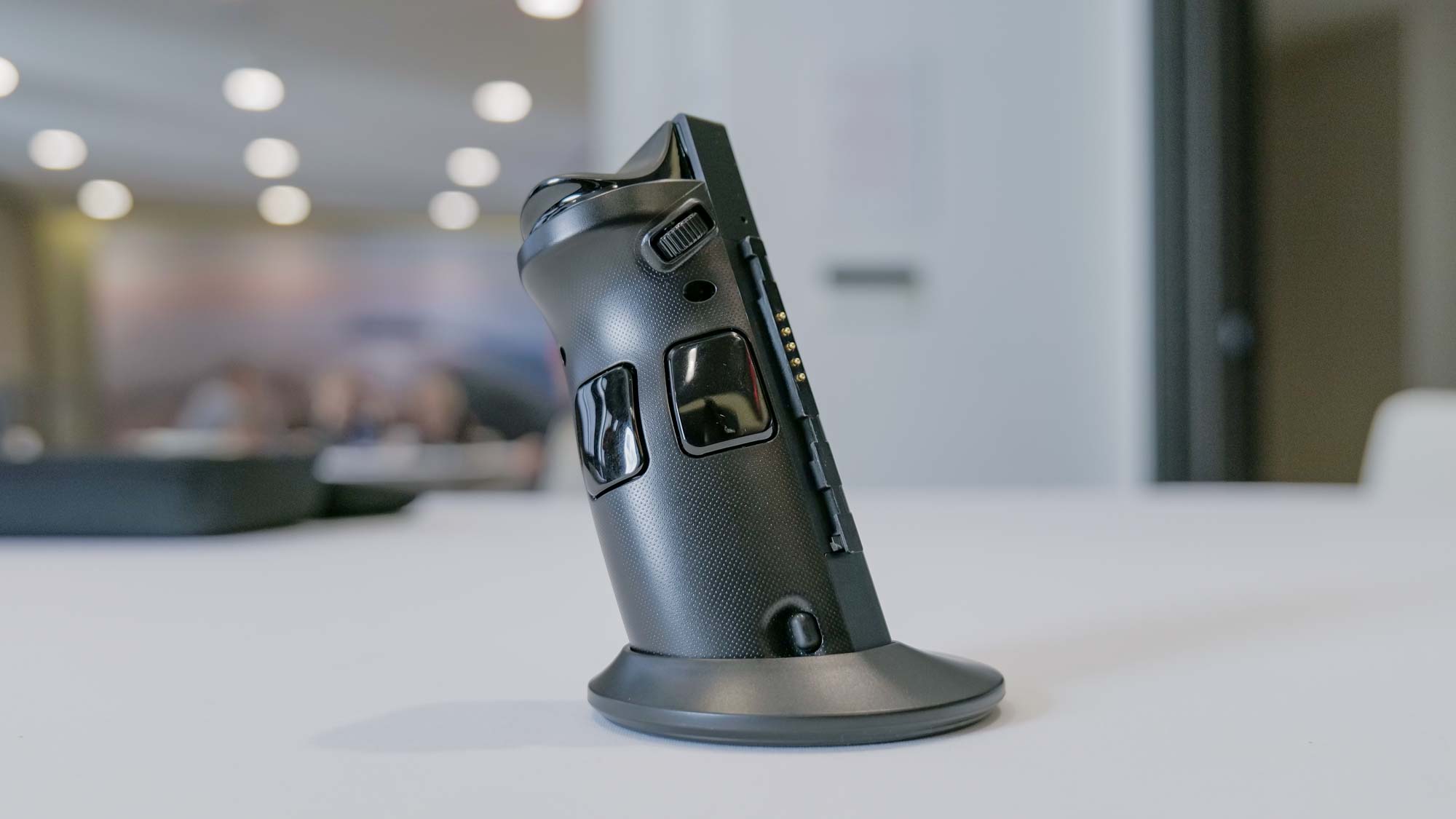
Speaking about things that are both beneficial and detrimental, let’s talk about the Legion Go’s controllers.
While I’m not a fan of the Nintendo Switch’s joy-con controllers due to their small size and thin profile, I love how easily they slide in and out of the console. I can’t say the same for the Legion Go’s controllers, which take some effort to detach. Removing the controllers is similar to the Switch, only you have to hold a button down on the bottom of each controller while simultaneously pulling down, instead of pulling them up the way you do on the Switch.
Muscle memory confusion aside, the Legion Go controllers often get stuck when you’re trying to pull them off. Thankfully, reattaching the controllers is easier.
The right controller differs from the left since it has two extra buttons on its side, a small touchpad underneath the right analog stick and a scroll wheel. When playing first-person shooting games, you can enable FPS mode on the right controller and then place it on an included controller base to use the controller as a pseudo mouse.
Using the right controller like this is supposed to provide more precision and control. I need to test this aspect further, but I felt I had less control using the controller like this in Doom Eternal because the cursor felt too sensitive. Perhaps I need to adjust the in-game aiming sensitivity. Regardless, I don’t think I’ll end up liking this functionality much (if at all).
Outlook
These are my first thoughts about the Lenovo Legion Go, so my stance might change after I spend more time with it. The large display does an excellent job of immersing you in whatever games you’re playing, and it’s great that you can access most of your PC gaming library on this handheld device. And though not as intuitive or robust as SteamOS, the Legion Space user interface feels easy enough to navigate.
That said, I’m not sure if Lenovo’s handheld can topple the Steam Deck. Windows 11 is great for desktops, but as I’ve experienced, the OS isn’t suited for gaming handhelds. That limits the potential audience for similar products since you can’t just pick this machine up and start gaming. However, for the PC gaming crowd, this aspect won’t be an issue. After all, Windows 11 does provide a deep level of customization — which is a selling point for some.
That's all I have to say for now, so stay tuned for my full Lenovo Legion Go review!







